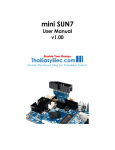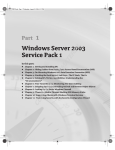Download Wiley AutoCAD 2012 For Dummies
Transcript
1 RI AL Introducing AutoCAD and AutoCAD LT TE In This Chapter ▶ Using AutoCAD and DWG files ▶ Meeting the AutoCAD product family ▶ Using AutoCAD LT instead of AutoCAD TE D ▶ Finding out what’s new in 2012 MA ▶ Getting the AutoCAD advantage M CO PY RI GH aybe you’re one of the few remaining holdouts who continue to practice the ancient art of manual drafting with pencil and vellum. If so, I must tell you that you belong to a dwindling breed. Or maybe you’re completely new to drafting and yearn for the wealth and fame (would I lead you on?) of the drafter’s life. Maybe you’re an engineer or architect who needs to catch up with the young CAD hotshots in your office. Maybe you tried to use AutoCAD a long time ago, but gave up in frustration or just got rusty. Or maybe you currently use an older release, such as AutoCAD 2006 or even (if you’re into antiques) AutoCAD 2000. Whatever your current situation or motivation, I hope that you enjoy the process of becoming proficient with AutoCAD. Drawing with AutoCAD is challenging at first, but it’s a challenge worth meeting. AutoCAD rewards those who think creatively about their work and look for ways to do it better. You can always find out more, discover a new trick, or improve the efficiency and quality of your drawing production. 12 Part I: AutoCAD 101 AutoCAD first hit the bricks in the early 1980s, around the same time as the first IBM PCs. It was offered for a bewildering variety of operating systems, including CP/M (ask your granddad about that one!), various flavors of Unix, and even Apple’s Macintosh. By far the most popular of those early versions was for MS-DOS (your dad can tell you about that one). In 1997, Autodesk settled on Microsoft Windows as the sole operating system for AutoCAD, and that was the case for the next 13 years. Then, in 2010, Autodesk released its first non-Windows version for many years: AutoCAD for Mac. The last version of AutoCAD to run on the Mac was Release 12, which appeared as long ago as 1992. It’s taken a while, but it looks like the Mac is back! In this book, I cover only the Windows versions of AutoCAD 2012 and AutoCAD LT 2012. AutoCAD For Mac is different enough — in both capabilities and interface — from the Windows versions that I simply can’t cover it all here. If you’re a Mac user with an interest in running AutoCAD, check out Mastering AutoCAD For Mac by George Omura and Rick Graham (Sybex Publishing). AutoCAD 2012 and AutoCAD LT 2012 are supported in the following Windows flavors, including both 32- and 64-bit versions: ✓ Windows 7 and Windows Vista Home Premium ✓ Windows 7 Professional ✓ Windows 7 and Windows Vista Enterprise ✓ Windows 7 and Windows Vista Ultimate ✓ Windows Vista Business ✓ Windows XP Professional ✓ Windows XP Home (32-bit only) Although not officially supported, AutoCAD 2012 (and AutoCAD LT 2012) can also run in Windows XP Tablet 2005 Edition, and make use of the tablet functionality included in Windows Vista and Windows 7. Trying to do production drafting on a tablet isn’t a great idea because of limitations in the graphics system, but I know it works, because I’m running it that way myself! Because of AutoCAD’s MS-DOS heritage and its emphasis on efficiency for production drafters, it’s not the easiest program to master, but it has gotten easier and more consistent over the past decade or so. AutoCAD is pretty well integrated into the Windows environment now, but you still bump into some vestiges of its MS-DOS legacy — especially the command line (that text area lurking at the bottom of the AutoCAD screen — see Chapter 2 for details). But even the command line — oops! command window — is kinder and gentler in AutoCAD 2012. This book guides you around the bumps and minimizes the bruises. Chapter 1: Introducing AutoCAD and AutoCAD LT Why AutoCAD? AutoCAD has been around a long time — since 1982, which I suspect, dear readers, is longer than some of you! AutoCAD ushered in the transition from really expensive mainframe and minicomputer CAD systems costing tens of thousands of dollars to merely somewhat expensive microcomputer CAD programs costing a few thousand dollars. AutoCAD’s 3D capabilities have grown by leaps and bounds over the last several releases, and 3D modeling is becoming a common way of checking designs before they’re drafted. Nevertheless, AutoCAD is, first and foremost, a program for creating two-dimensional technical drawings: drawings in which measurements and precision are important because these kinds of drawings often get used to build something. The drawings that you create with AutoCAD must adhere to standards established long ago for hand-drafted drawings. The upfront investment to use AutoCAD is certainly more expensive than the investment needed to use pencil and paper, and the learning curve is much steeper, too. So why bother? The key reasons for using AutoCAD rather than pencil and paper are ✓ Precision: Creating lines, circles, and other shapes of the exact dimensions is easier with AutoCAD than with pencils. ✓ Modifiability: Drawings are much easier to modify on the computer screen than on paper. CAD modifications are a lot cleaner, too. ✓ Efficiency: Creating many kinds of drawings is faster with a CAD program — especially drawings that involve repetition, such as floor plans in a multistory building. But that efficiency takes skill and practice. If you’re an accomplished pencil-and-paper drafter, don’t expect CAD to be faster at first! Figure 1-1 shows several kinds of drawings in AutoCAD 2012. Why choose AutoCAD? AutoCAD is just the starting point of a whole industry of software products designed to work with AutoCAD. Autodesk (the software corporation that develops and sells AutoCAD along with a host of other design software) has helped this process along immensely by providing a series of programming interfaces to AutoCAD (although, alas, not to AutoCAD LT — see the “Seeing the LT” section later in the chapter) that other companies — and Autodesk itself — have used to extend the application. Some of the add-on products became such winners that Autodesk acquired them and incorporated them into its own products. When you compare all the resources — including the add-ons, extensions, training courses, books, and so on — AutoCAD doesn’t have much PC CAD competition. 13 14 Part I: AutoCAD 101 Figure 1-1: Cities, houses, little toy trains — what do you want to draw today? The Importance of Being DWG To take full advantage of AutoCAD in your work environment, you need to be aware of the DWG file format, the format in which AutoCAD saves drawings. Here are some DWG facts to keep in mind: ✓ In some cases, an older release of AutoCAD can’t open a DWG file that’s been saved by a newer AutoCAD release. ✓ A newer release of AutoCAD can always open files saved by older versions. ✓ Some previous AutoCAD releases can open files saved by the subsequent one or two versions. For example, AutoCAD 2007 and AutoCAD 2008 can open DWG files saved by AutoCAD 2009. That’s because Autodesk didn’t change the DWG file format between those releases. However, the drawing file format did change with AutoCAD 2010, so drawings created in the current release must be saved in an older format to be openable in AutoCAD 2009 and earlier. ✓ You can use the Save As option in newer releases to save the file to some older DWG formats. In fact, AutoCAD 2012 can save as far back as AutoCAD Release 14, which dates all the way back to 1997! Table 1-1 shows which versions (described later in this chapter) use which DWG file formats. Chapter 1: Introducing AutoCAD and AutoCAD LT Table 1-1 AutoCAD Versions and DWG File Formats AutoCAD Version AutoCAD LT Version Release Year DWG File Format AutoCAD 2012 AutoCAD LT 2012 2011 Acad 2010 AutoCAD 2011 AutoCAD LT 2011 2010 Acad 2010 AutoCAD 2010 AutoCAD LT 2010 2009 Acad 2010 AutoCAD 2009 AutoCAD LT 2009 2008 Acad 2007 AutoCAD 2008 AutoCAD LT 2008 2007 Acad 2007 AutoCAD 2007 AutoCAD LT 2007 2006 Acad 2007 AutoCAD 2006 AutoCAD LT 2006 2005 Acad 2004 AutoCAD 2005 AutoCAD LT 2005 2004 Acad 2004 AutoCAD 2004 AutoCAD LT 2004 2003 Acad 2004 AutoCAD 2002 AutoCAD LT 2002 2001 Acad 2000 AutoCAD 2000i AutoCAD LT 2000i 2000 Acad 2000 AutoCAD 2000 AutoCAD LT 2000 1999 Acad 2000 AutoCAD Release 14 AutoCAD LT 98 and 97 1997 Acad R14 AutoCAD Release 13 AutoCAD LT 95 1994 Acad R13 AutoCAD Release 12 AutoCAD LT Release 2 1992 Acad R12 The new file format introduced in AutoCAD 2010 was necessary to handle new features — especially parametric drafting, and that format proved more efficient at saving files and handling much larger objects. Best of all, from the user’s perspective, it was noticeably faster to work with than AutoCAD 2009. Working with AutoCAD is easier when your co-workers and colleagues in other companies all use the same release of AutoCAD and AutoCAD-related tools. That way, your DWG files, add-on tools, and even the details of your CAD knowledge can be mixed and matched among your workgroup and partners. In the real world, you may work with people, probably from other companies, who use AutoCAD releases as old as AutoCAD 2006 — or even older. Many programs claim to be DWG-compatible — that is, capable of converting data to and from the AutoCAD DWG format. Achieving this compatibility is, however, a difficult thing to do well. Even a small error in file conversion can have results ranging in severity from annoying to appalling. Every time you open a drawing file, AutoCAD checks its parentage and warns you if the drawing was created by a non-Autodesk program. If you exchange DWG files with people who use other CAD programs, you may have to spend time finding and fixing translation problems. 15 16 Part I: AutoCAD 101 Seeing the LT AutoCAD LT is one of the best deals around, a shining example of the old 80/20 rule: roughly 80 percent of the capabilities of AutoCAD for roughly 20 percent of the money. (Actually, with recent price creep, it’s now more like a 70/30 rule.) Like AutoCAD, AutoCAD LT runs on mainstream Windows computers and doesn’t require any additional hardware devices. With AutoCAD LT, you can be a player in the world of AutoCAD, the world’s leading CAD program, for a comparatively low starting cost. AutoCAD LT is a very close cousin to AutoCAD. Autodesk creates AutoCAD LT by starting with the AutoCAD program, taking out a few features to justify charging a lower price, and adding a couple of features to enhance ease of use versus full AutoCAD. As a result, AutoCAD LT looks and works much like AutoCAD. The drawing areas, Ribbons, and Application Menu of the two programs are nearly identical. (LT is missing a few Ribbon tabs, panels, and commands.) In fact, the major difference between the programs has nothing to do with the programs themselves. The major difference is that AutoCAD LT lacks support for several customization and programming languages that are used to develop AutoCAD add-ons. That means that almost none of the add-on programs or utilities offered by Autodesk and others are available to LT users. AutoCAD LT also has limited 3D support. You can view and edit 3D objects in AutoCAD LT, so you can work with drawings created in AutoCAD that contain 3D objects. However, you can’t create true 3D objects in LT. Although you may hear claims that AutoCAD LT is easier to master and use than AutoCAD, the truth is that they’re about equally difficult (or easy, depending on your NQ [nerd quotient]). The LT learning curve doesn’t differ significantly from that of AutoCAD. AutoCAD was originally designed for maximum power and then modified somewhat to improve ease of use. AutoCAD LT shares this same heritage. Fortunately, the minimal differences between LT and AutoCAD mean that after you climb that learning curve, you have the same great view. You have almost the full range of the AutoCAD 2D drafting tools, and you can exchange DWG files with AutoCAD users without data loss. This book covers AutoCAD 2012, but most of the information in it (except for the 3D chapters in Part V) applies to AutoCAD LT 2012 as well. The icon that you see to the left of this paragraph highlights significant differences. Chapter 1: Introducing AutoCAD and AutoCAD LT Checking System Requirements If you’re upgrading from AutoCAD 2011 or another recent release, and you work mostly or entirely in 2D, you’re probably already current with system requirements. In fact, if your work is mostly or entirely 2D — and therefore, this applies especially for LT users — AutoCAD 2012 will run fine on pretty well any computer that will run Windows 7, Vista, or XP. AutoCAD’s requirements for running in Windows 7 or Vista are substantially higher than for running in XP. This section covers the details. You should know the following before you upgrade from any older AutoCAD release: ✓ Wash those old Windows: AutoCAD 2012 does not support older versions of Windows, such as Windows 2000, NT, 98, or Me. For AutoCAD 2012, you have three choices of operating system: • Windows XP (Home or Professional, SP3 or later) • Windows Vista (Enterprise, Business, Ultimate, or Home Premium, SP2 or later) • Windows 7 (Enterprise, Ultimate, Professional, or Home Premium) If you like to be cutting edge, there are 64-bit versions of AutoCAD 2012 and AutoCAD LT 2012 that run in the 64-bit versions of XP, Vista, and Windows 7. ✓ DWG file compatibility: The AutoCAD DWG file format changed with AutoCAD 2010. Users of that version can open drawings created in AutoCAD 2012, but you have to use the Save As option on the Application Menu, or the SAVEAS command, to create DWG files for users of AutoCAD 2009 and earlier versions. You can save as far back as Release 14, and if you need to go even further back, you can save to the Release 12 DXF format. Visit the online help system for instructions. ✓ Application compatibility: If you use third-party applications with a previous AutoCAD release, they may not work with AutoCAD 2012. AutoCAD applications developed with the .NET or the ObjectARX (AutoCAD Runtime eXtension) interfaces may or may not need to be recompiled. Many LSP (AutoLISP) programs written for the last several versions of AutoCAD should work without change. Built-in support for VBA applications is not included in AutoCAD 2012. You can continue to run VBA applications, but you first have to download and install the VBA installer from the Autodesk Web site. At the time this book went to press, the URL has not been finalized; just go to 17 18 Part I: AutoCAD 101 www.autodesk.com and enter VBA installer in the Search box. There are 32- and 64-bit versions, so make sure you download the right one for your system. ✓ Computer system requirements: For AutoCAD 2012, Autodesk recommends a 1.6 GHz or better Intel or AMD processor with at least 2 GB of RAM if running in Windows XP, and a 3.0 GHz or better chip and 2 GB of RAM if running in Windows Vista or Windows 7. The recommended operating system is Windows 7 (64-bit). Multiple processors and dual core are supported. You also need a 1024 x 768 or higher display resolution with True Color graphics, 1 GB to 2 GB of available hard disk space, an Internet connection, and Microsoft Internet Explorer 7.0 or later. ✓ Additional requirements for working in 3D: AutoCAD recommends a 3 GHz or better processor; 4 GB or more of RAM; a workstation-class, Direct3D-capable graphics card with at least 128 MB of memory; and an additional 2 GB of hard disk space beyond the 1 GB required for installation. I find even the recommended system requirements on the minimal side. For example, my desktop computer runs at a screen resolutions of 1600 x 1200 and 1280 x 1024 (yes, I run dual monitors), and my tablet computer runs at 1400 x 1050. The figures in this book were shot at a resolution of 1024 x 768, and as you can see, things can get pretty crowded at that resolution. Suddenly, It’s 2012! There’s been a new release of AutoCAD every spring since AutoCAD 2004 was launched in 2003. That’s not much time for even an army of programmers to deliver a compelling new feature set that’s going to convince all users that they just have to upgrade. What seems to have been happening is a concentration on particular areas in recent releases. For example, AutoCAD 2007 was a 3D release; the 3D modeling engine was made much easier to use, but there was relatively little to please the 2D crowd. By contrast, AutoCAD 2008 was deemed to be “the drafter’s release” because of the number of enhancements to 2D drawing capabilities — above all, the introduction of annotative documentation objects. In AutoCAD 2009, the new interface got the lion’s share of development (suddenly, it’s Office 2007!); major new features were limited to some 3D navigation tools, the very useful Quick Properties tool, and a palettized Layer Properties Manager. AutoCAD 2010 offered significant enhancements to both 2D and 3D users, in parametric drafting tools, and freeform mesh modeling, and AutoCAD 2011 introduced some workflow changes and a welcome new object property, transparency. Chapter 1: Introducing AutoCAD and AutoCAD LT AutoCAD 2012 once again has presents for both the 2D and the 3D crowds, in the new “in-canvas” viewport controls (not in AutoCAD LT), a selectable user coordinate system icon, a powerful Content Explorer feature, and the Inventor Fusion plug-in that helps you generate 2D drawing views from existing 3D models. (Note: Inventor Fusion is not included in AutoCAD LT, and I don’t have room to cover it in this book). Here’s a short list of some of AutoCAD 2012’s new features, along with where you can go to find out more: ✓ Content Explorer: If you’re running in Windows Vista or Windows 7, you’re familiar with the new and fast Search feature. Content Explorer is like Windows Search for drawings. You tag folders to be watched in the Content Explorer palette. Then, after they’ve been indexed (a background operation that can take some time to complete), you can find named blocks, layouts, text strings, styles, and so forth pretty well instantly. I don’t cover Content Explorer in detail in this book, so check out the online help for specific information. ✓ Autocomplete: Starting to type a command is now just like starting to type someone’s address in your e-mail program. AutoCAD 2012’s Autocomplete feature starts suggesting commands as you type. I wasn’t convinced that this was such a great addition until I noticed that I no longer had to type (or mistype!) command and variable names like DRAWORDER or REMEMBERFOLDERS. I introduce you to Autocomplete in Chapter 2. ✓ Autodesk Exchange: Autodesk Exchange for AutoCAD is a new front end for the program that starts (by default) automatically when you start AutoCAD 2012. The Home screen includes “what’s new” videos and links to various Autodesk Web pages. It also contains the AutoCAD version of the iTunes store, where you can purchase apps — free or low-cost addins to make your work go more smoothly. The online help system now runs in the Autodesk Exchange window. ✓ Groups: AutoCAD and AutoCAD LT have had a group function for many years, but it’s never been that easy to use. Now a simple Group panel on the Home tab makes creating, viewing, and ungrouping objects a breeze. I cover groups in Chapter 10. ✓ Copy enhancements: The COPY command gets an Array option for making duplicates in a linear pattern. And the NCOPY command, for copying objects nested inside blocks, formerly an Express Tool, moves to the core program — which means that AutoCAD LT users have it for the first time. See Chapter 11 for more information. 19 20 Part I: AutoCAD 101 ✓ Delete duplicates: The OVERKILL command is another Express Tool that’s been moved to the core (and so is available to LT users). This command searches your drawing for objects drawn on top of other objects and (as its name suggests) deletes them. I cover this feature in Chapter 11. ✓ Fillets, chamfers, blends, and joins: FILLET and CHAMFER now include a preview that shows you the effect of changing a fillet radius or chamfer distance before you finish the command. The new BLEND command creates curved transitions with tangent- or curve-continuity between lines, arcs, splines, and polylines. And JOIN now incorporates the Join option of the PEDIT command: Select a bunch of individual objects with common endpoints, and then run the JOIN command to create a new polyline object. I cover these changed commands in Chapter 11. ✓ Associative arrays: Prior to AutoCAD 2012, the ARRAY command created simple rectangular or circular patterns of selected objects. AutoCAD 2012 replaces the old ARRAY with a new, complex command that creates a new associative array object. I’m of two minds on this one. It has its uses, I’m sure, but the old ARRAY was probably more useful in everyday drafting, and that command is now harder to use than it was in AutoCAD 2011. I cover associative arrays in Chapters 11 and 18. ✓ Online tab: Both AutoCAD 2012 and AutoCAD LT 2012 get a new Online tab. Most of the tools on this tab start the AutoCAD WS service. With an account at www.autocadws.com, you can upload drawings to and from mobile devices running Apple’s iOS4 operating system — that is, iPhones, iPads, and the iPod touch. For more information, have a look at Chapter 20. ✓ UCS enhancements: The UCS (User Coordinate System) icon is now selectable. You can grab it by selecting the grip and the origin and move it to a new base point, and you can orient your new UCS by dragging the grips on the X-, Y-, and Z-axes of the icon. I introduce you to this new way of setting up coordinate systems in Chapter 21. ✓ In-canvas viewport controls: This is probably my favorite new feature in AutoCAD 2012. I’ve barely started using it in this release, and already I’m looking for it in the AutoCAD 2010 version I use at the office every day — and, of course, it’s not there! You can simply click one of the labels at the top-left corner of a viewport to switch views or visual styles, or toggle between a multiple viewport configuration or a single viewport. I cover this new interface feature in Chapter 22.










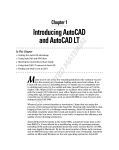
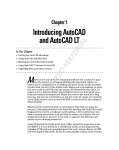
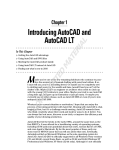
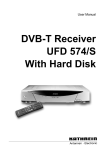
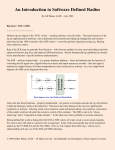
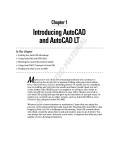
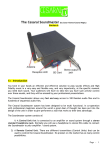
![Echo27 [ENG].docx](http://vs1.manualzilla.com/store/data/005976885_1-e0af01262414116599497eec32cd1fc5-150x150.png)

